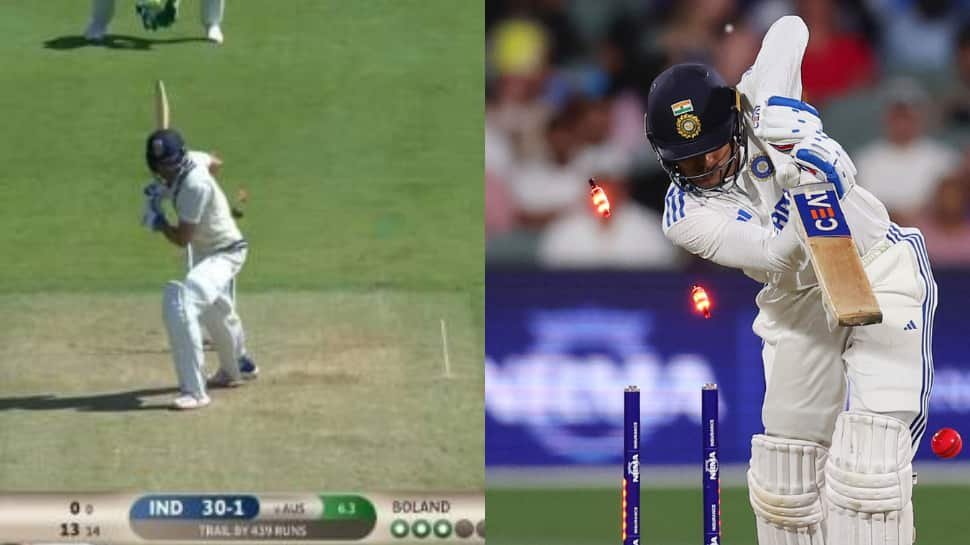Shubman Gill, India’s Test captain and a batting prodigy, has cemented his reputation as a run machine, exemplified by his stellar 754 runs at an average of 75.40, including four centuries, during India’s 2025 Test series in England. Yet, his journey to such heights was not without challenges. Early in his career, Gill grappled with a technical flaw rooted in his formative years his reluctance to commit to the front foot.
Top Seamers Challenged It
The weakness was well infront of oppositions and the top seamers like James Anderson, Tim Southee, Kyle Jamieson, Matt Henry, Mohammad Shami (in the IPL), and Scott Boland exploited with precision. Gill’s batting style was shaped on the cement pitches of his childhood in Punjab. These hard, true surfaces encouraged a back-foot dominant approach, where he either stood tall or took a minimal step forward to punch balls on the rise. For fuller deliveries, he relied on impeccable hand-eye coordination, letting his hands flow through the line rather than striding decisively forward.
ALSO READ – How Sachin Tendulkar And Steve Smith’s Guidance Helped Shubman Gill Conquer England
Technique
This technique lent his batting an elegant fluidity, but it also left him vulnerable. Skilled seamers, particularly in Test cricket, targeted him with good-length deliveries that nipped back, often trapping him lbw or clean-bowled due to his delayed or incomplete front-foot movement.
Overcame It
Ahead of the England tour, Gill sought advice from two batting maestros: Sachin Tendulkar and Steve Smith. Both emphasized a simple yet effective mantra: “defend straight, score square.” Tendulkar, in an interview with The Indian Express, elaborated on Gill’s need to prioritize a proper front-foot stride. “Most dismissals happen on the front foot,” Tendulkar noted, advising Gill to focus on a straight defensive technique and play in the ‘V’ to maintain a side-on stance. This approach, Tendulkar argued, would not only counter nip-backers but also improve Gill’s ability to leave balls outside off-stump, addressing a key vulnerability.Gill’s cement-pitch upbringing made this adjustment challenging.
His instinct to rely on timing rather than footwork was a double-edged sword while it enhanced his back-foot game, it exposed him to bowlers who could exploit his hesitation. However, his consultations with Smith and Tendulkar proved transformative. By focusing on a disciplined front-foot stride and playing straighter, Gill neutralized the nip-backer threat, unlocking his potential on swinging English pitches. This evolution underscores Gill’s adaptability, cementing his status as one of India’s brightest cricketing talents.
Gill, speaking to Hotstar, explained how the pressure of performing overseas had been weighing on him, but he felt assured due to his preparation and mindset.
“There was pressure of not doing well outside India. But I was feeling very confident in terms of my practice, mentally, and what positions I was getting into,” Gill said.
The Shubman Gill-led Indian team is set to host the West Indies in a two-match Test series beginning October 2. This will mark Gill’s first home assignment as full-time Test captain, with India looking to build on recent overseas success.
India Squad
Shubman Gill (c), Yashasvi Jaiswal, KL Rahul, Sai Sudharsan, N Jagadeesan, Ravindra Jadeja, Dhruv Jurel (w), Washington Sundar, Axar Patel, Prasidh Krishna, Mohammed Siraj, Jasprit Bumrah, Kuldeep Yadav, Devdutt Padikkal, Nitish Kumar Reddy
West Indies Squad
Roston Chase (c), Shai Hope (w), John Campbell, Tagenarine Chanderpaul, Alick Athanaze, Brandon King, Justin Greaves, Khary Pierre, Johann Layne, Anderson Phillip, Jayden Seales, Jomel Warrican, Jediah Blades, Kevlon Anderson, Tevin Imlach

